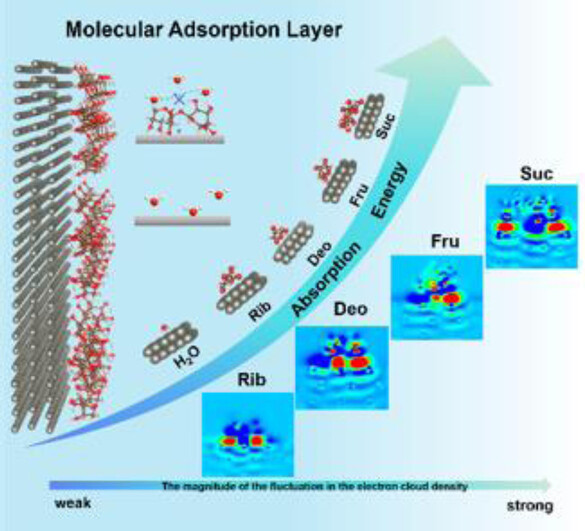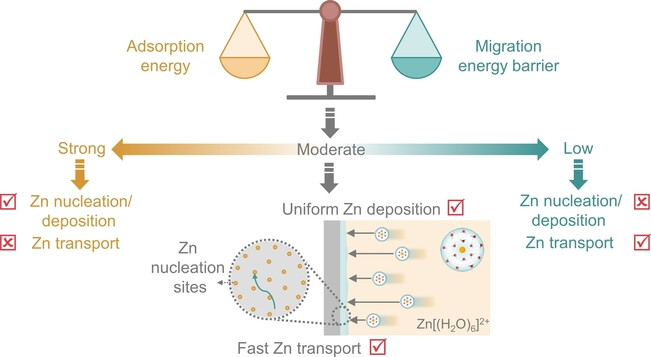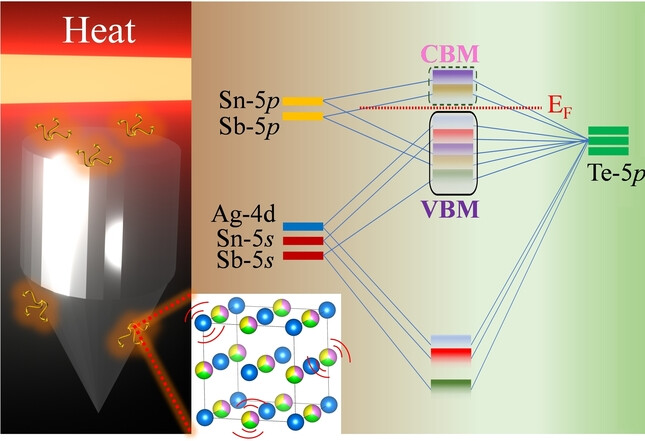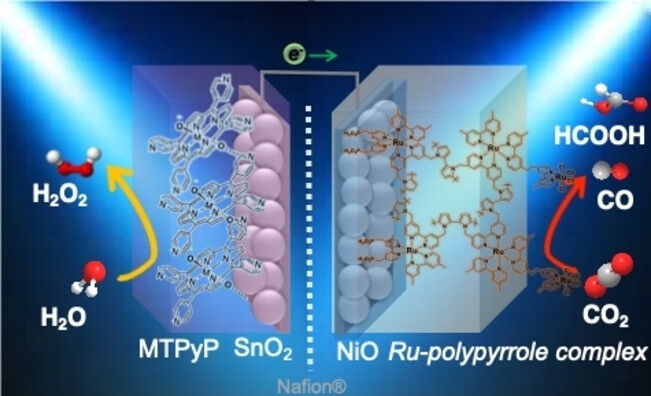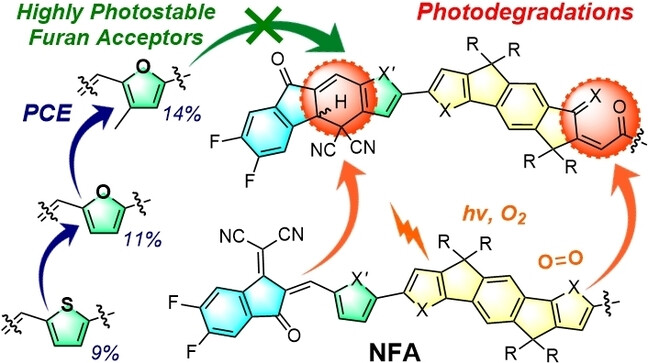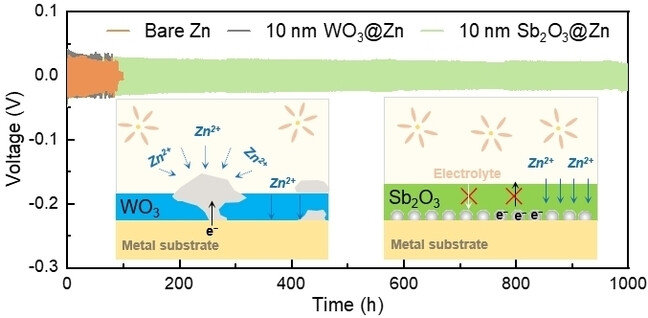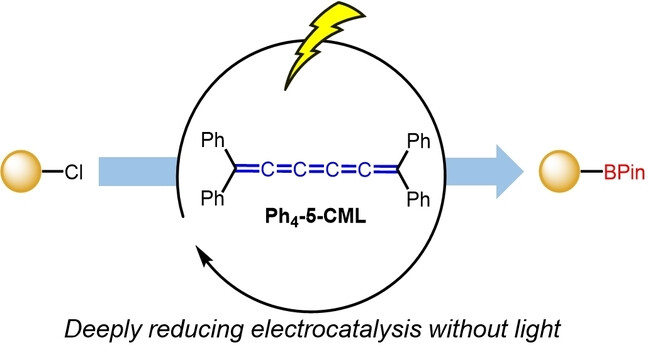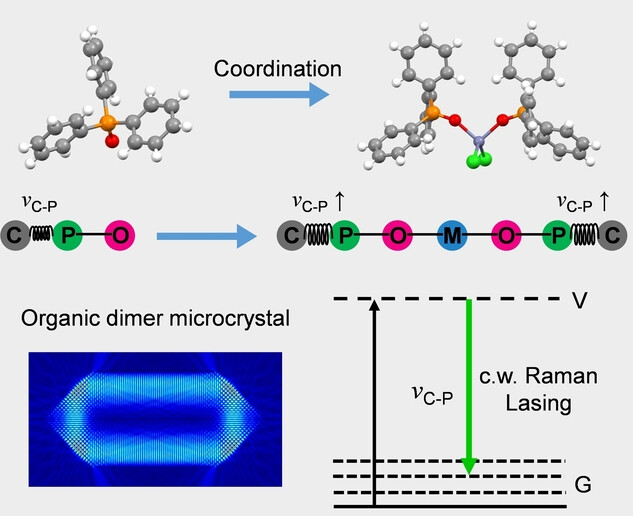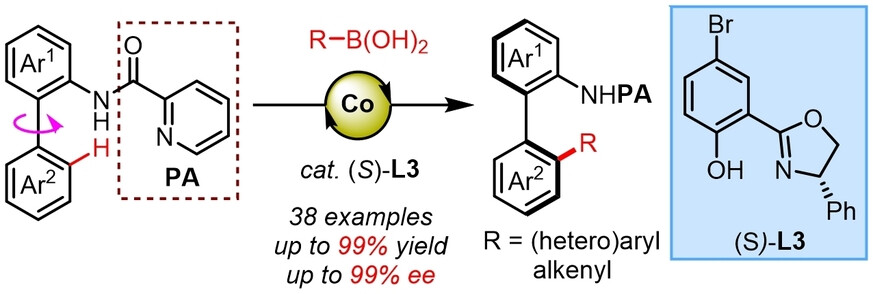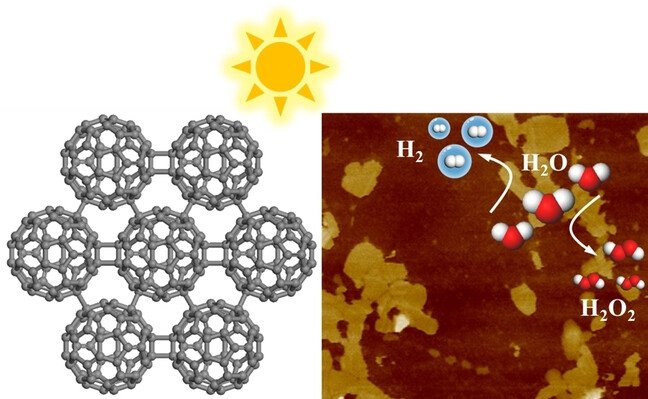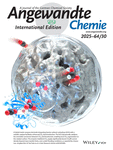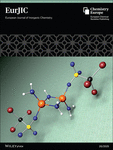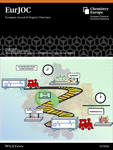Journal list menu
Export Citations
Download PDFs
Covers
Titelbild: Bestimmung der Produktivität der direkten Umwandlung von Methan in Methanol mittels Kupfer ausgetauschtem Zeolith Omega (MAZ) mittels dem Sauerstoff Looping Verfahren (Angew. Chem. 40/2023)
- First Published: 25 September 2023
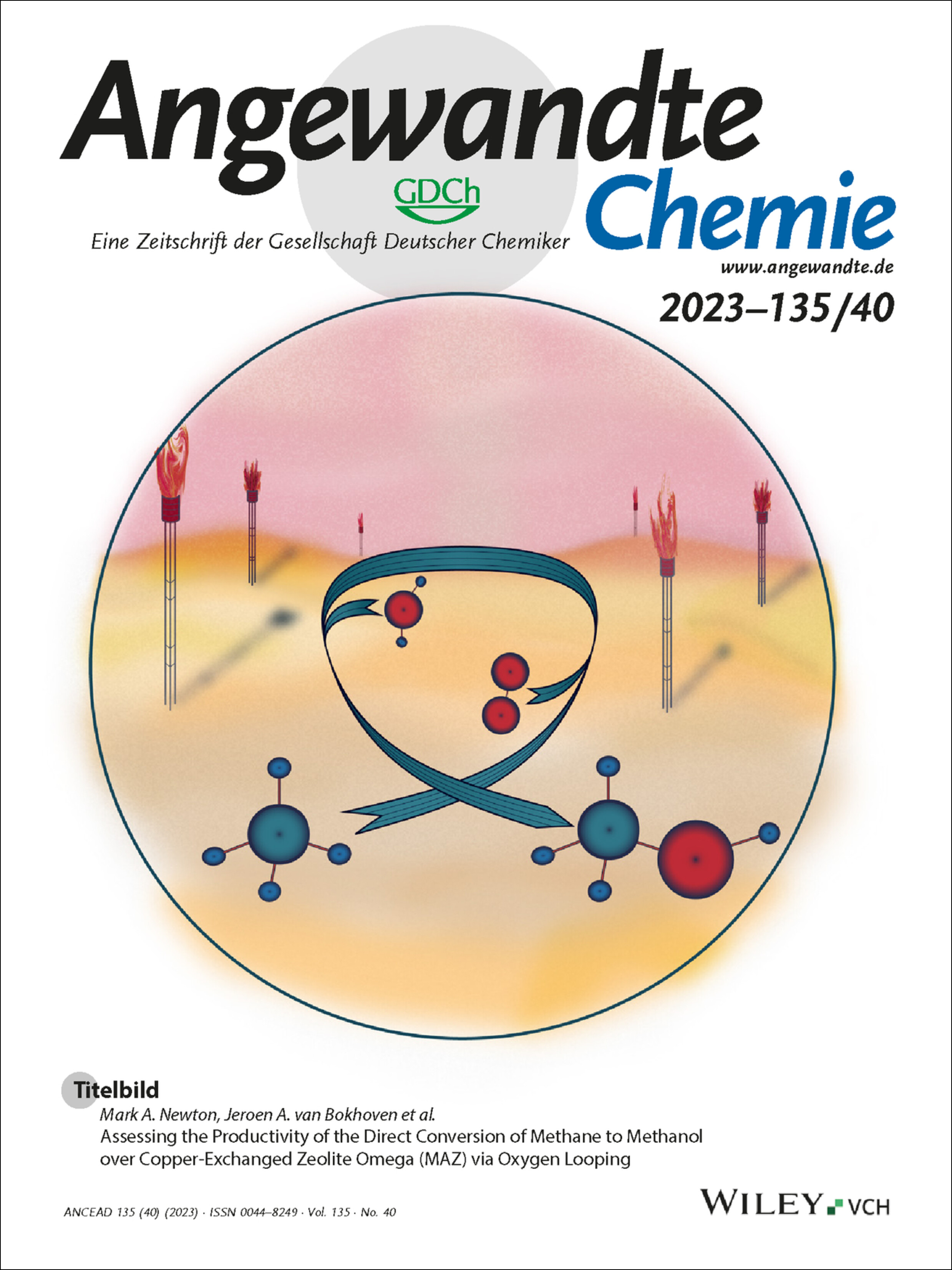
The oxygen looping approach …. …, a potential scale-flexible methane-to-methanol conversion process, has been a focus of research for over a decade. Such a process would be essential to avoid the flaring of methane at remote oil exploitation sites, where methane emerges as an associated gas. Using a novel screening methodology, in their Research Article (e202305140) Mark A. Newton, Jeroen A. van Bokhoven et al. show the significant potential that copper-exchanged zeolite omega exhibits for such a looping process.
Innentitelbild: Mechanistic Understanding of Efficient Polyethylene Hydrocracking over Two-Dimensional Platinum-Anchored Tungsten Trioxide (Angew. Chem. 40/2023)
- First Published: 09 August 2023
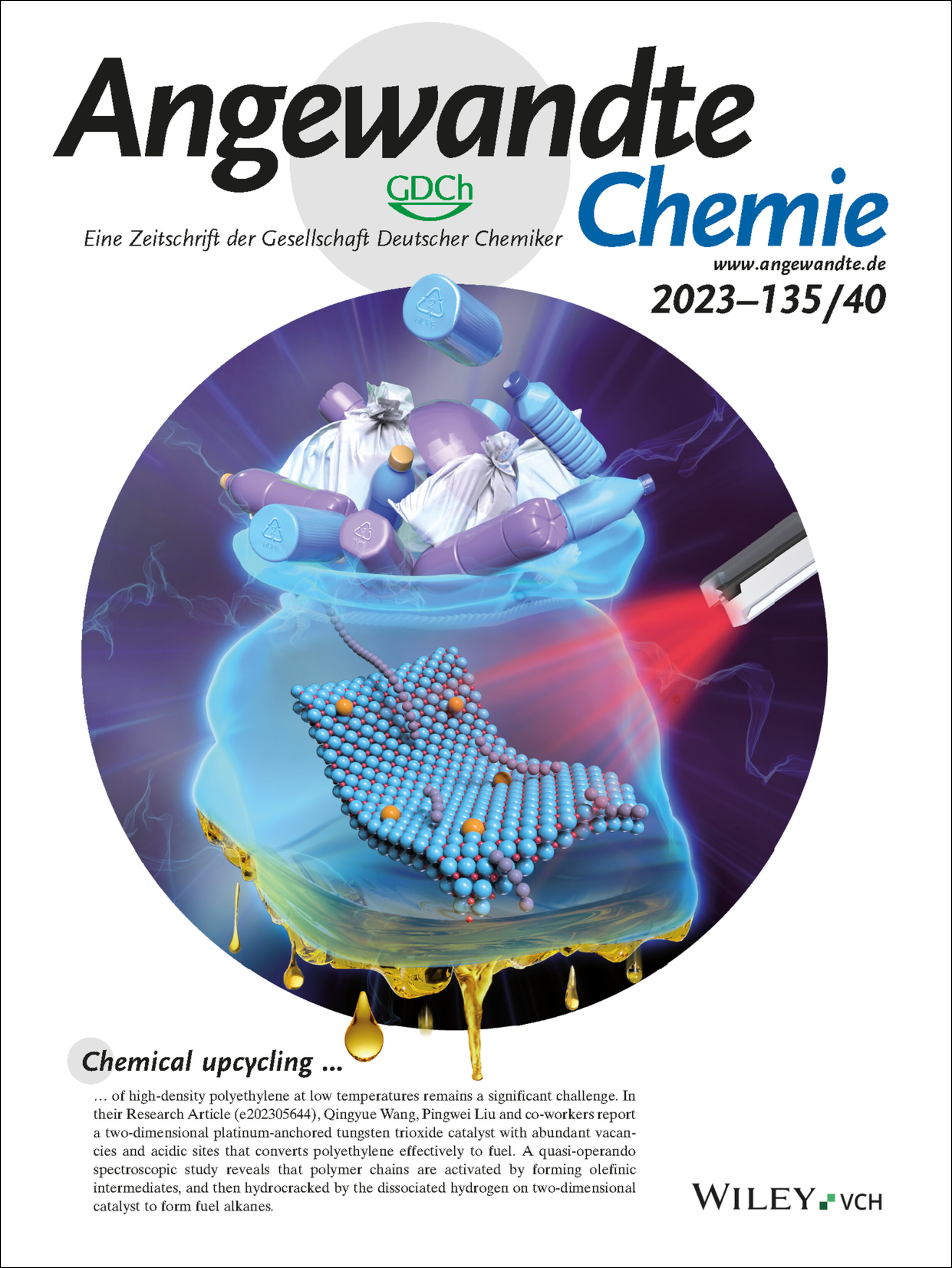
Chemical upcycling of high-density polyethylene at low temperatures remains a significant challenge. In their Research Article (e202305644), Qingyue Wang, Pingwei Liu and co-workers report a two-dimensional platinum-anchored tungsten trioxide catalyst with abundant vacancies and acidic sites that converts polyethylene effectively to fuel. A quasi-operando spectroscopic study reveals that polymer chains are activated by forming olefinic intermediates, and then hydrocracked by the dissociated hydrogen on two-dimensional catalyst to form fuel alkanes.
Innenrücktitelbild: Site-Selective Synthesis and Concurrent Immobilization of Imine-Based Covalent Organic Frameworks on Electrodes Using an Electrogenerated Acid (Angew. Chem. 40/2023)
- First Published: 26 July 2023
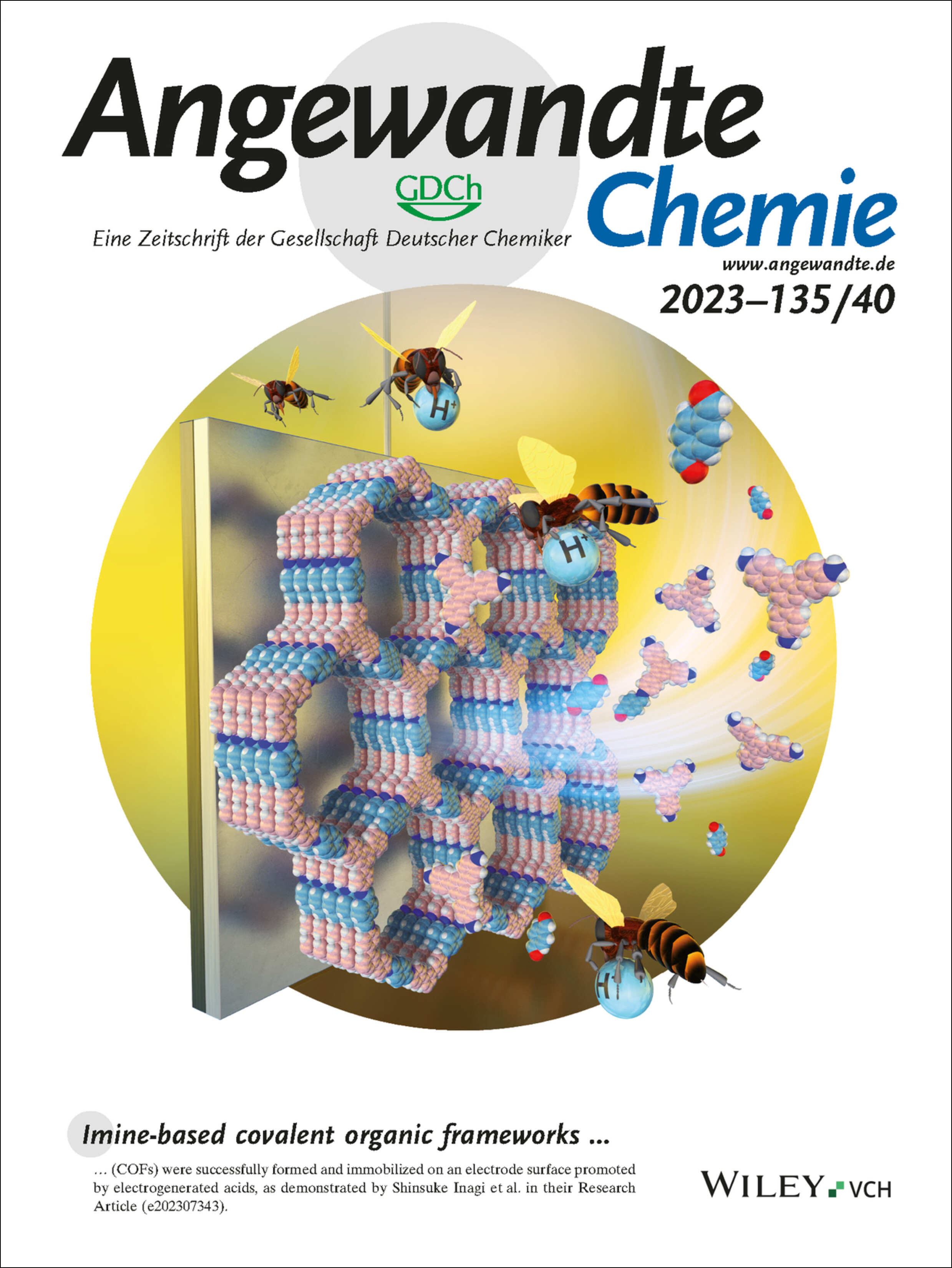
Imine-based covalent organic frameworks (COFs) were successfully formed and immobilized on an electrode surface promoted by electrogenerated acids, as demonstrated by Shinsuke Inagi et al. in their Research Article (e202307343).
Rücktitelbild: Universal Sub-Nanoreactor Strategy for Synthesis of Yolk-Shell MoS2 Supported Single Atom Electrocatalysts toward Robust Hydrogen Evolution Reaction (Angew. Chem. 40/2023)
- First Published: 25 September 2023
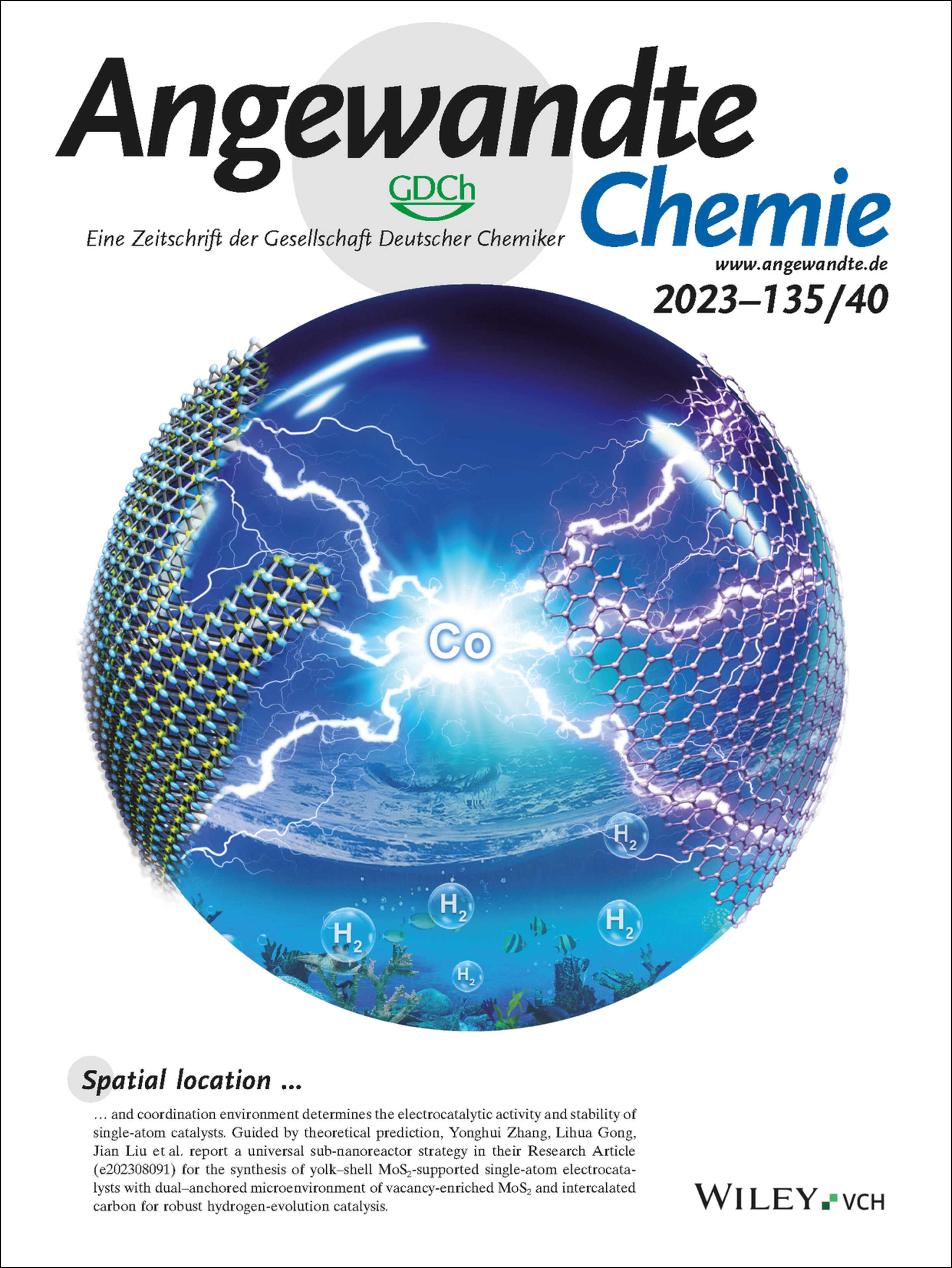
Spatial location and coordination environment determines the electrocatalytic activity and stability of single-atom catalysts. Guided by theoretical prediction, Yonghui Zhang, Lihua Gong, Jian Liu et al. report a universal sub-nanoreactor strategy in their Research Article (e202308091) for the synthesis of yolk–shell MoS2-supported single-atom electrocatalysts with dual–anchored microenvironment of vacancy-enriched MoS2 and intercalated carbon for robust hydrogen-evolution catalysis.
Frontispiz
Frontispiz: Induced-Fit-Identification in a Rigid Metal-Organic Framework for ppm-Level CO2 Removal and Ultra-Pure CO Enrichment
- First Published: 25 September 2023
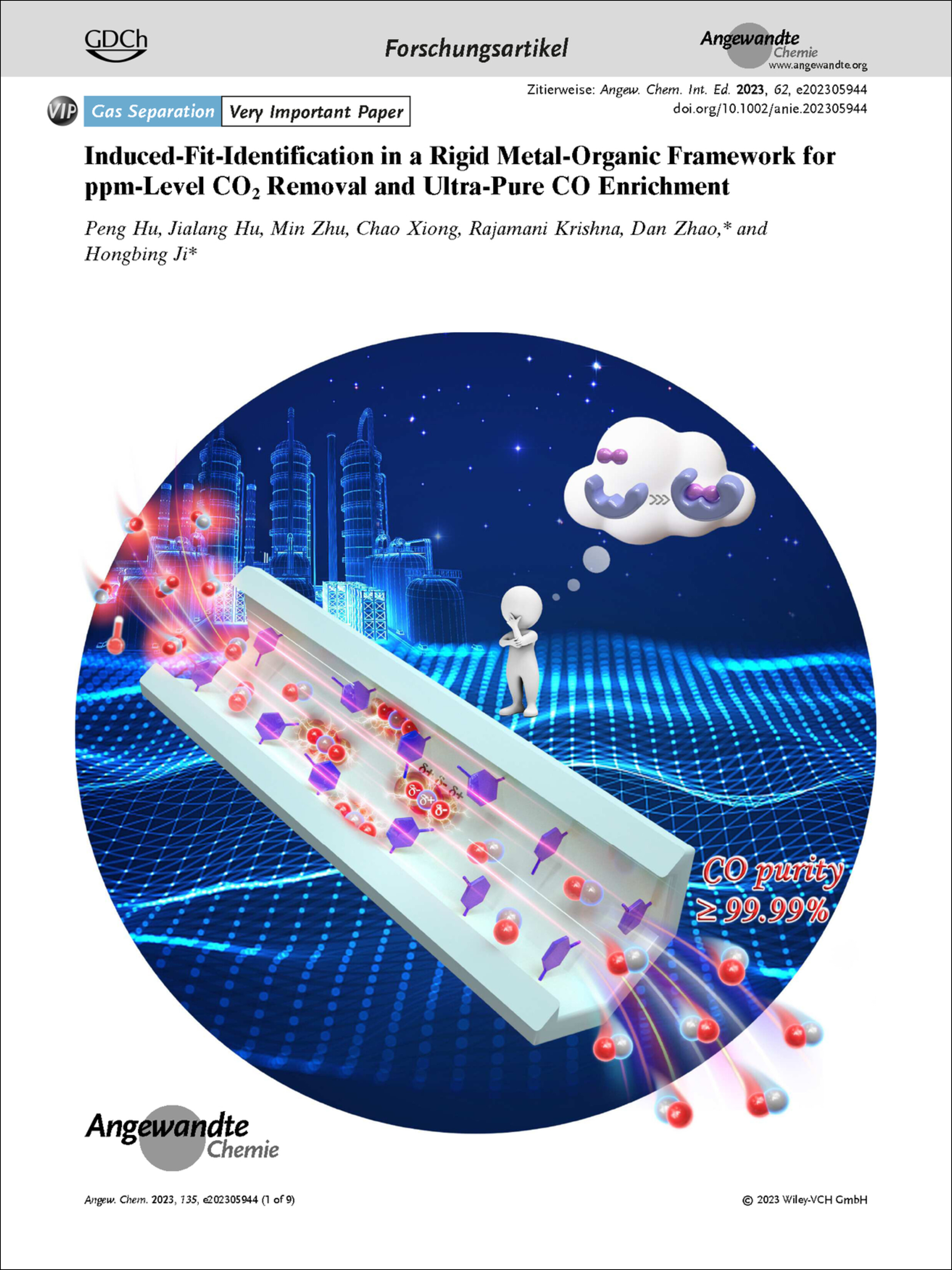
Carbon Dioxide Capture. A rigid metal-organic framework for CO2 removal from crude syngas and ultra-pure CO enrichment is reported by Dan Zhao, Hongbing Ji et al. in their Research Article (e202305944).
Frontispiz: Performance-Deskriptoren für Katalysatoren auf Basis von Molybdän-, Wolfram- oder Rheniumoxiden für die Metathese von Ethen mit 2-Buten zu Propen
- First Published: 25 September 2023

Heterogeneous Catalysis. In their Communication (e202308872), Tatiana Otroshchenko, Evgenii V. Kondratenko et al. report performance descriptors for catalysts based on molybdenum, tungsten, or rhenium oxides for ethylene metathesis with 2-butenes to propene.
Graphisches Inhaltsverzeichnis
Graphisches Inhaltsverzeichnis: Angew. Chem. 40/2023
- First Published: 25 September 2023
Announcement
Classifieds: Jobs and Awards, Products and Services
- First Published: 25 September 2023
Team Profile
A Collaboration for Exploring Fundamental Property–Performance Relationships for Electrochemical Energy Storage
- First Published: 28 July 2023
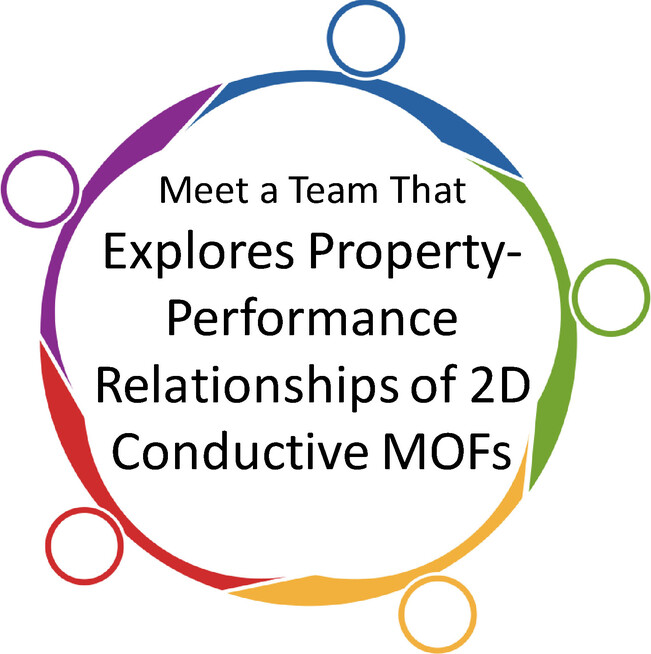
“As the project unfolded, we realized that this research requires not only material synthesis and electrochemical investigations but also advanced techniques and expertise for characterization … Clear communication is super important, especially when it comes to duplicating highly sensitive experiments in other labs …” Find out more about collaborative work by the MEET Battery Research Center, the Helmholtz-Zentrum Berlin fÃ1/4r Materialien und Energie, and Paderborn University.
Introducing …
Malay Patra
- First Published: 10 August 2023

“I chose my current career path because of my strong fascination with synthetic chemistry, which enables us to design new and powerful tools to understand and modulate biological or physiological processes … The most important qualities of a mentor are friendliness, enthusiasm, patience, transparency, and trustworthiness.” Find out more about Malay Patra in his Introducing … Profile.
Katharina Ehrmann
- First Published: 16 August 2023

“The most important future applications of my research are functional parts for a multitude of applications in recycling, medicine, electronics and more, and some of which I probably don't even know about yet … Modern science needs to focus on … See, I think this is not how science works. We never know for sure where the next big idea, the next solution to a problem, can be found.” Find out more about Katharina Ehrmann in her Introducing … Profile.
Nachruf
Otto S. Wolfbeis (1947–2023)
- First Published: 11 September 2023

Otto Wolfbeis, Professor emeritus für Analytical Chemistry an der Universität Regensburg, verstarb am 1. Juni 2023. Mit seinen bahnbrechenden Arbeiten auf dem Gebiet der optischen Sensoren und fluoreszierenden (Nano-)Materialien wird er als herausragender Forscher in Erinnerung bleiben, der viele Talente auf der ganzen Welt inspirierte.
Highlights
Microporous Materials
Liquids with Permanent Macroporosity
- First Published: 26 July 2023

Tao Li and co-workers reported a material based on metal–organic framework nanocrystals which contains the largest reported permanent pores for a liquid. They described the CO2 and water adsorption, as well as the thermal switching properties of the porous liquid. This is the first example of a dual micro-macroporous liquid created using design rules of hierarchical porosity.
Kurzaufsätze
Nascent Proteomics
Nascent Proteomics: Chemical Tools for Monitoring Newly Synthesized Proteins
- First Published: 12 June 2023

Nascent proteomics selectively analyzes newly synthesized proteins (NSPs) by labeling them with either isotopes or chemical tags, allowing for the detection of rapid changes in translational profiles upon acute biological modulations. Programmable variants of nascent proteomics enable the control of NSP labeling via optical or genetic manipulations, ensuring selectivity towards cell types and/or cellular states.
Heterogeneous Catalysis
Dual Atom Catalysts for Energy and Environmental Applications
- First Published: 05 June 2023
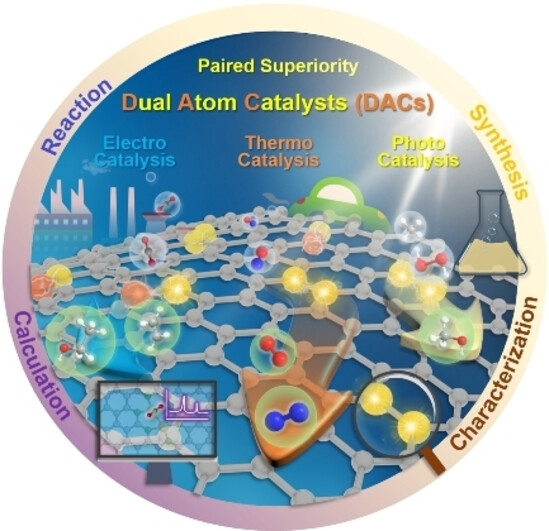
Inspired by paired metal sites in enzymes, dual-atom catalysts (DACs) were developed as a frontier in heterogeneous catalysis. DACs possess many unique advantages and surpass their counterparts in various catalytic processes. Herein, we summarize the up-to-date advancements in synthesis, characterization, structure-activity relationship of DACs and outlook the future development in this field with combination from computational insights.
Aufsätze
Polymer Modification
Non-activated Esters as Reactive Handles in Direct Post-Polymerization Modification
- First Published: 19 June 2023
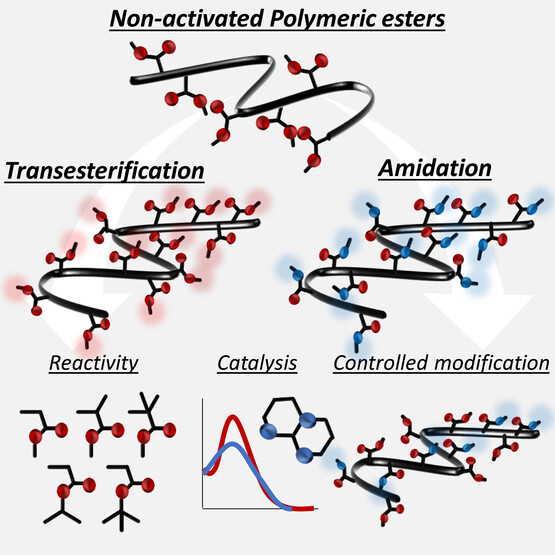
Modification of non-activated esters represents interesting opportunities in polymer science. While early attempts indicated severe synthetic challenges in this area, recently several researchers have made significant progress, thus enabling structural diversification and synthetic upcycling of various polymers. This review summarizes this progress, and highlights unique structural features that can be exploited in a macromolecular context.
Solar Cells
Recoverable Flexible Perovskite Solar Cells for Next-Generation Portable Power Sources
- First Published: 22 June 2023
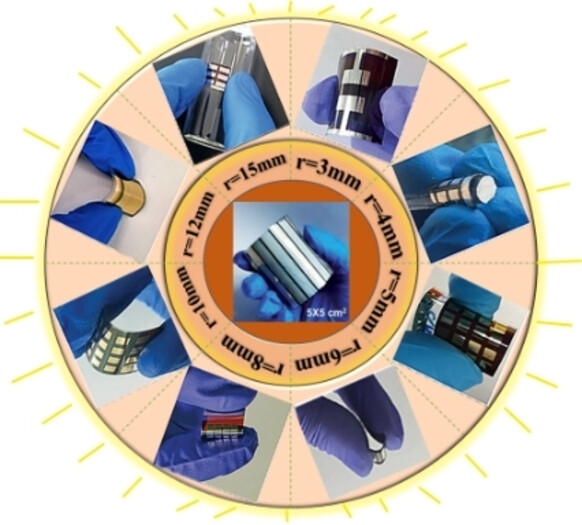
Flexible perovskite solar cells have attracted wide attention because of their unique advantages, such as light weight and high flexibility. This review article discusses the routes toward improvement of the recoverability and environmental stability of flexible perovskite solar cells, and highlights the practical applications. The outlook and challenges of durable flexible perovskite devices in future commercialization are also considered.
Forschungsartikel
Gas Separation | Very Important Paper
Induced-Fit-Identification in a Rigid Metal-Organic Framework for ppm-Level CO2 Removal and Ultra-Pure CO Enrichment
- First Published: 13 June 2023

An atypical thermoresponsive feature is incorporated into a rigid Mg-MOF, which realizes ppm-level CO2 capture and ultra-pure CO enrichment (≥99.99 %) at elevated working temperature. The property is demonstrated by comprehensive in situ variable-temperature tests showing outstanding performance in syngas purification and CO upgrading through an induced-fit-identification mechanism.
Mechanistic Studies | Very Important Paper
An Experimental and Computational Investigation Rules Out Direct Nucleophilic Addition on the N2 Ligand in Manganese Dinitrogen Complex [Cp(CO)2Mn(N2)]
- First Published: 28 June 2023
![An Experimental and Computational Investigation Rules Out Direct Nucleophilic Addition on the N2 Ligand in Manganese Dinitrogen Complex [Cp(CO)2Mn(N2)]](/cms/asset/08ddd81e-58e2-46ab-929e-a57d3e667665/ange202305235-toc-0001-m.jpg)
The peculiar reactivity of [CpMn(CO)2(N2)] (Cp=η5-cyclopentadienyl) is revisited to shed light on the proposed nucleophilic attack of PhLi on its N2 ligand. Our study shows that such reactivity doesn't happen while the attack of the carbanion on CO is favored, albeit giving rise to a very labile compound. The latter decomposes above −20 °C into a N2-free phenyl manganate that was erroneously proposed to be an anionic phenyldiazenido complex.
Hydrogen Storage
Modulating Electronic Metal-Support Interactions to Boost Visible-Light-Driven Hydrolysis of Ammonia Borane: Nickel-Platinum Nanoparticles Supported on Phosphorus-Doped Titania
- First Published: 08 June 2023
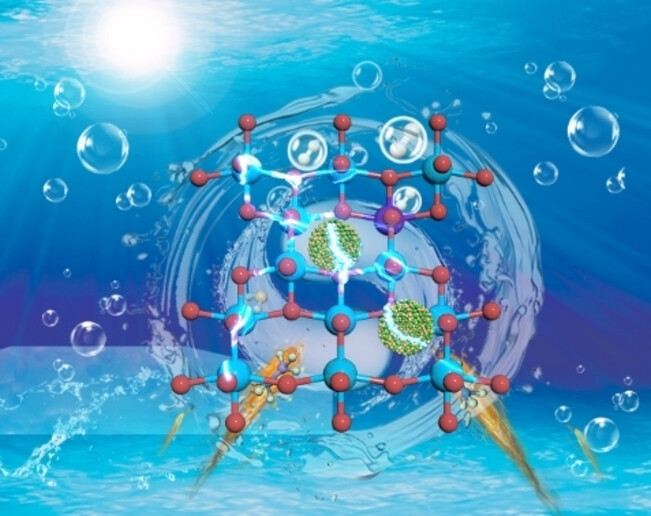
Ni−Pt nanoparticles supported on P-doped TiO2 mediate visible-light-driven ammonia borane hydrolysis. The optimized Ni40Pt60/P-TiO2 catalyst exhibits a high turnover frequency of 967.8 molH2 molPt−1 min−1. P doping enhances the visible-light absorption and modulates the electronic states of the metals to enhance the strong metal-support interactions, thereby promoting the hydrogen-evolving activity and stability of the catalyst.
Plastics Upcycling | Hot Paper
Mechanistic Understanding of Efficient Polyethylene Hydrocracking over Two-Dimensional Platinum-Anchored Tungsten Trioxide
- First Published: 16 June 2023

A 2D platinum-anchored tungsten trioxide (Pt/WO3) catalyst with abundant vacancies and acidic sites activates high-density polyethylene (HDPE) polymer chains by forming C=O intermediates. Hydrocracking occurs when the intermediates are hydrogenated by the dissociated H2 on Pt/WO3 to form alkanes. The well-dispersed Pt on 2D WO3 nanosheets achieved almost complete HDPE conversion with a yield of 88.9 % fuel at a low temperature of 200 °C.
CO2 Reduction | Hot Paper
Tuning C1/C2 Selectivity of CO2 Electrochemical Reduction over in-Situ Evolved CuO/SnO2 Heterostructure
- First Published: 23 July 2023
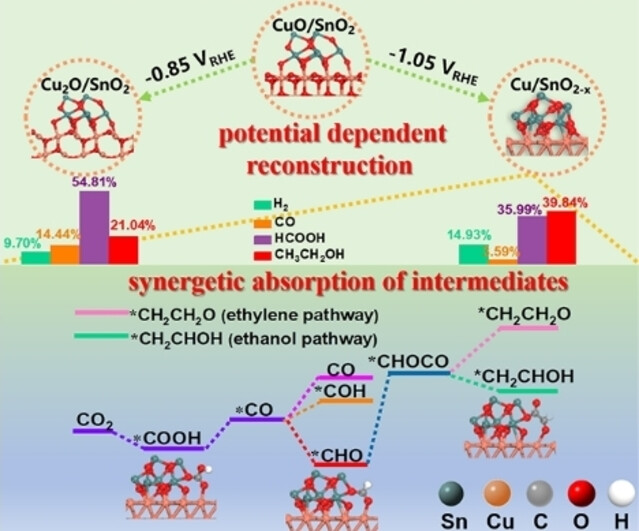
For the first time, we report a tuning C1/C2 selectivity of CO2 electrochemical reduction over in situ electrochemically evolved CuO/SnO2 heterostructure. Specifically, the synergetic absorption of *COOH and *CHOCO intermediates at the interface of the newly evolved Cu/SnO2-x facilitates ethanol generation.
Electrochemistry
Elucidating the Underlying Reactivities of Alternating Current Electrosynthesis by Time-Resolved Mapping of Short-Lived Reactive Intermediates
- First Published: 18 August 2023

A time-resolved operando electrochemical mass spectrometry platform was developed to elucidate the unique reactivities of alternating current (AC) electrosynthesis. Minimization of over-oxidation and effective reaction of the electrogenerated intermediates in AC electrolysis was demonstrated. Notably, the kinetics of reactive N-centered radical intermediates in multistep sequential AC electrosynthesis could be controlled to minimize side reactions.
Covalent Organic Frameworks | Hot Paper
Site-Selective Synthesis and Concurrent Immobilization of Imine-Based Covalent Organic Frameworks on Electrodes Using an Electrogenerated Acid
- First Published: 09 June 2023
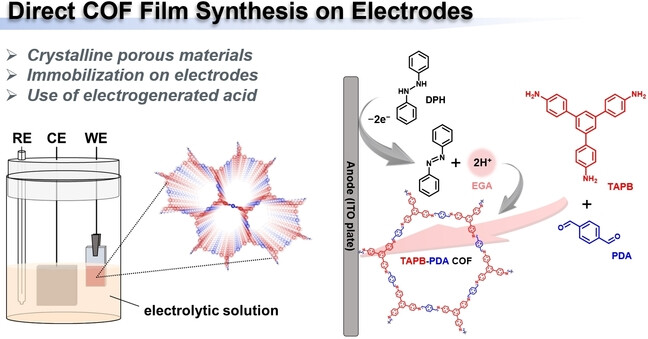
Here, we report a novel synthetic methodology for covalent organic frameworks (COFs) that utilizes an electrogenerated acid (EGA), which is produced at an electrode surface by electrochemical oxidation of a precursor, acting as an effective Brønsted acid catalyst for imine bond formation from amine and aldehyde monomers. Simultaneously, it provides the corresponding COF film deposited on the electrode surface with high crystallinity and porosity.
Immunotherapy
Sodium Bicarbonate Nanoparticles for Amplified Cancer Immunotherapy by Inducing Pyroptosis and Regulating Lactic Acid Metabolism
- First Published: 16 August 2023
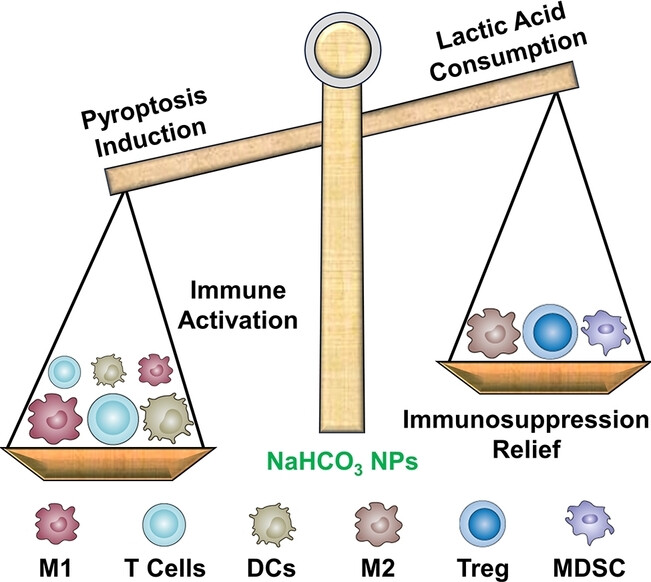
A simple and drug-free inorganic nanomaterial, alkalescent sodium bicarbonate nanoparticles (NaHCO3 NPs), was obtained to regulate lactic acid metabolism through acid-base neutralization, and thus to reverse the mildly acidic immunosuppressive tumor environment. Furthermore, it can release high amounts of Na+ ions and induce a surge in intracellular osmolarity to activate the pyroptosis pathway and improve immune responses.
Zinc Batteries
Maximizing Electrostatic Polarity of Non-Sacrificial Electrolyte Additives Enables Stable Zinc-Metal Anodes for Aqueous Batteries
- First Published: 16 August 2023
Hydrogen Evolution
Universal Sub-Nanoreactor Strategy for Synthesis of Yolk-Shell MoS2 Supported Single Atom Electrocatalysts toward Robust Hydrogen Evolution Reaction
- First Published: 21 June 2023
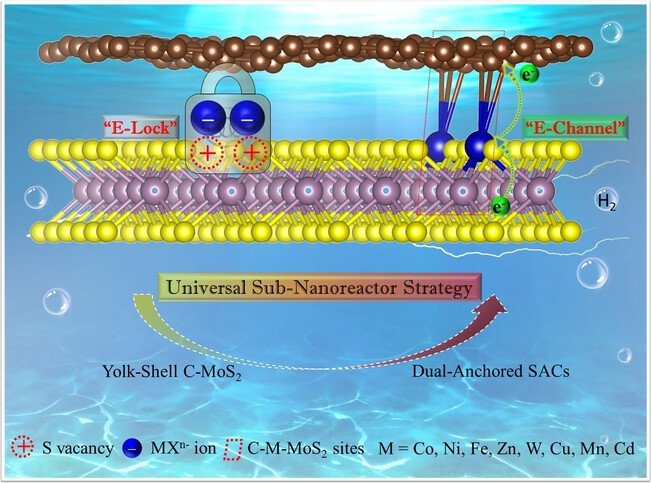
Guided by theoretical prediction of the “E-Lock” and “E-Channel” at sulfur vacancy and intercalation carbon, we report a universal sub-nanoreactor strategy to precisely regulate the spatial location and local microenvironment of metal single atoms (Co, Ni, Fe, Zn, W, Cu, Mn, and Cd) over yolk-shell C−MoS2 dual-support for robust hydrogen-evolution reaction in acid.
Protein–Peptide Interactions
Harnessing Aromatic-Histidine Interactions through Synergistic Backbone Extension and Side Chain Modification
- First Published: 16 August 2023

Rational and coordinated side chain modification and backbone extension, by replacing α-amino acid residues with β-amino acid residues, enables favorable interaction between a His side chain on a target protein and an aromatic side chain on a synthetic peptide ligand. This strategy, which enhances affinity, is showcased with peptides that bind to the parathyroid hormone receptor 1.
Electroanalytical Chemistry | Very Important Paper
A Rapidly Responsive Sensor for Wireless Detection of Early and Mature Microbial Biofilms
- First Published: 25 July 2023
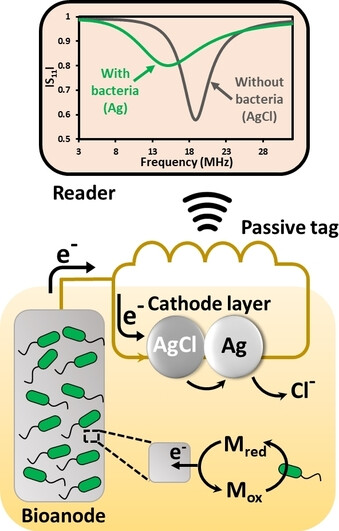
A setup for wireless detection of early and mature microbial biofilms has been developed by combining inkjet printing of nanomaterials, chip-less antenna, and electrogenicity of biofilms. Wireless sensing relies on the biofilm ability to electro-reduce antenna integrated AgCl to Ag. Detection of medically relevant biofilms formed by S. aureus and P. aeruginosa has been demonstrated, aiming for wireless wound infection sensing in clinics.
Cancer Therapy
Sonodynamic Cytokine Nanocomplexes with Specific Stimulation towards Effector T Cell for Combination Cancer Immunotherapy
- First Published: 16 August 2023

The sonodynamic cytokine nanocomplexes (SPNAI) can not only specifically activate effector T cells (Teffs) rather than regulatory T cells (Tregs), but also generate 1O2 under sono-irradiation for induction of immunogenic cell death, which synergistically elevates the ratio of Teffs/Tregs for effective antitumor immunity.
Solar Cells | Hot Paper
Thermodynamic Phase Transition of Three-Dimensional Solid Additives Guiding Molecular Assembly for Efficient Organic Solar Cells
- First Published: 15 August 2023
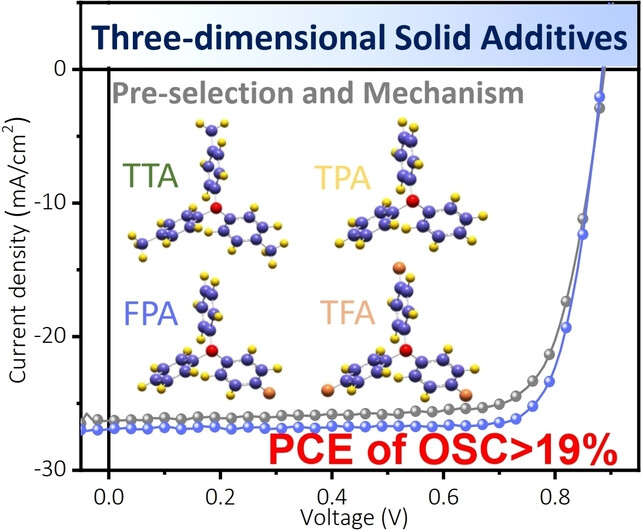
Three-dimensional solids were developed to optimize the nanoscale structure of the active layer in organic solar cells by offering ample assembly space during the phase-transition process, yielding a high power-conversion efficiency of over 19 %. This research not only established a valuable pre-selection approach for solid additives but also deepened our understanding of the underlying working mechanism.
Metal Oxides
Bulk and Surface Contributions to Ionisation Potentials of Metal Oxides
- First Published: 28 July 2023
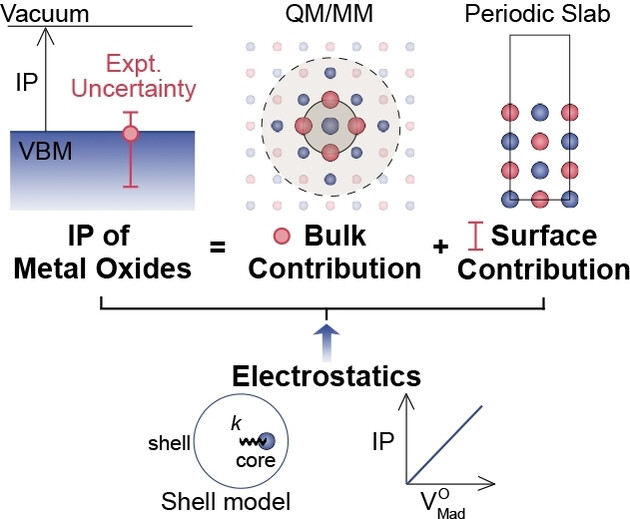
Using a combination of theoretical techniques, we separated the bulk and surface contributions of ionisation potentials of metal oxides, highlighting the critical role of electrostatics. Low bulk ionisation potentials and a high degree of tunability from surfaces were found in CeO2, HfO2, and ZrO2, explaining the discrepancies from measurements and guiding the future design of band-edge-related photocatalytic, photovoltaic, and electrochemical devices.
Zn-ion Batteries
Balancing Interfacial Reactions through Regulating p-Band Centers by an Indium Tin Oxide Protective Layer for Stable Zn Metal Anodes
- First Published: 10 August 2023
Thermoelectrics | Very Important Paper
Chemical Bonding Tuned Lattice Anharmonicity Leads to a High Thermoelectric Performance in Cubic AgSnSbTe3
- First Published: 15 August 2023
Magnetic Resonance Imaging | Hot Paper
Elastic Polymer Coated Nanoparticles with Fast Clearance for 19F MR Imaging
- First Published: 17 August 2023

Elastic polymer-coated nanoparticles (NPs) were developed as novel contrast agents for 19F MRI. These NPs encapsulated liquid perfluorocarbon, resulting in high elasticity and robust sensitivity in 19F NMR and MRI. Moreover, in vivo imaging of these NPs implied that elastic NPs suppressed long-term accumulation in the liver.
Solar Cells
Facile, Versatile and Stepwise Synthesis of High-Performance Oligomer Acceptors for Stable Organic Solar Cells
- First Published: 08 August 2023
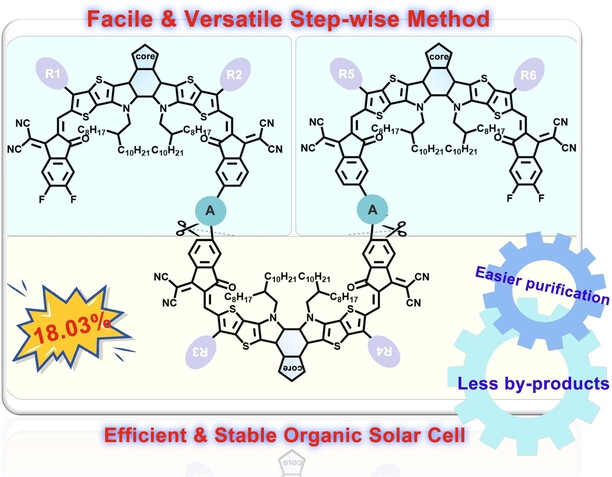
The stepwise method proposed to synthesize non-fullerene oligomer acceptors via consecutive Stille coupling reactions offers significant advantages compared to the traditional approach, resulting in fewer unwanted by-products and easier purification processes. By utilizing this method, the obtained Tri-Y6-OD-based organic solar cells achieved a high power conversion efficiency of 18.03 %, along with excellent stability.
Methanol Oxidation Reaction | Hot Paper
Defect Rich Structure Activated 3D Palladium Catalyst for Methanol Oxidation Reaction
- First Published: 15 August 2023
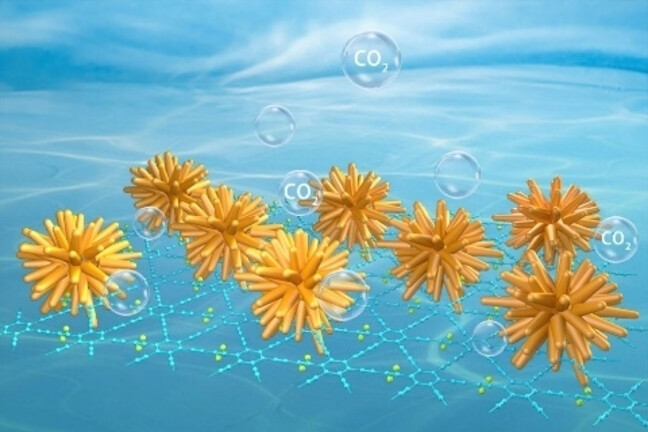
The introduction of defect-rich structures (stacking faults, twin boundaries, lattice distortion, steps, and edges), low coordination number (CN), and tensile strain in three-dimensional (3D) urchin-like palladium nanoparticles through chlorine bonded with sp-C in graphdiyne (Pd-UNs/Cl-GDY) can regulate the arrangement of metal atoms. The as-prepared Pd-UNs/Cl-GDY are highly efficient and durable methanol oxidation reaction electrocatalysts.
Artificial Photosynthesis | Hot Paper
Organic Electronics | Hot Paper
Photothermal Therapy
Molecular Engineering of Corrole Radicals by Polycyclic Aromatic Fusion: Towards Open-Shell Near-Infrared Materials for Efficient Photothermal Therapy
- First Published: 17 August 2023

Highly stable π-extended nickel corrole radicals and their cations exhibiting superior absorbing capacities across the visible-to-near-infrared (NIR) spectral region are synthesized via the radial fusion of aromatic rings. The nanoparticles encapsulating corrole radicals are high-performance photothermal agents and enable efficient NIR-triggered photoacoustic imaging and photothermal therapy in vivo.
Glycoconjugates
A Fixable Fluorescence-Quenched Substrate for Quantitation of Lysosomal Glucocerebrosidase Activity in Both Live and Fixed Cells
- First Published: 15 August 2023
Radical Ions
Syntheses and Structures of 5-Membered Heterocycles Featuring 1,2-Diphospha-1,3-Butadiene and Its Radical Anion
- First Published: 15 August 2023
Solar Energy Storage | Very Important Paper
Searching the Chemical Space of Bicyclic Dienes for Molecular Solar Thermal Energy Storage Candidates
- First Published: 25 July 2023

Illustration of the relative speed with which a large chemical space of bicyclic dienes can be screened for molecular solar thermal energy storage candidates. Density Functional Theory (DFT) is as illustrated not a feasible route due to computational cost, while extended tight binding (xTB) methods are much faster and can give estimates.
Natural Products Synthesis | Hot Paper
Total Synthesis of (−)-Batrachotoxin Enabled by a Pd/Ag-Promoted Suzuki–Miyaura Coupling Reaction
- First Published: 15 August 2023
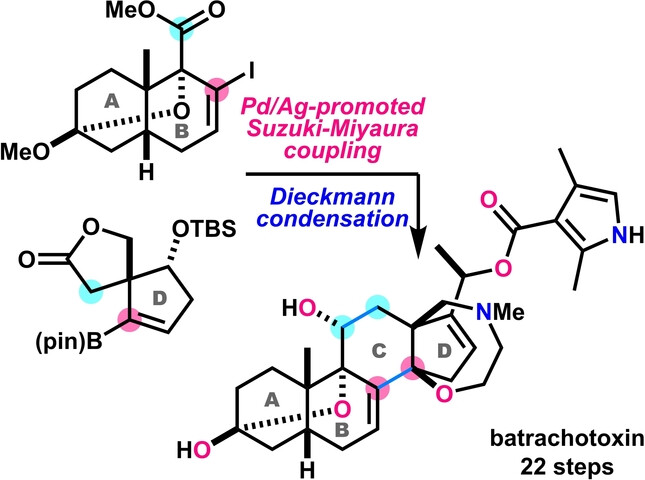
Batrachotoxin is an extremely potent cardio- and neurotoxic steroidal alkaloid. Its 6/6/6/5-membered carbocyclic framework is functionalized with two double bonds, a six-membered hemiacetal, a seven-membered oxazepane, and a dimethylpyrrolecarboxy group. By a novel and simple convergent strategy involving Pd/Ag-promoted Suzuki–Miyaura coupling and Dieckmann condensation reactions, the total synthesis of batrachotoxin was realized in 22 steps.
Oxygen Evolution Reaction
Unlocking the Transition of Electrochemical Water Oxidation Mechanism Induced by Heteroatom Doping
- First Published: 14 August 2023
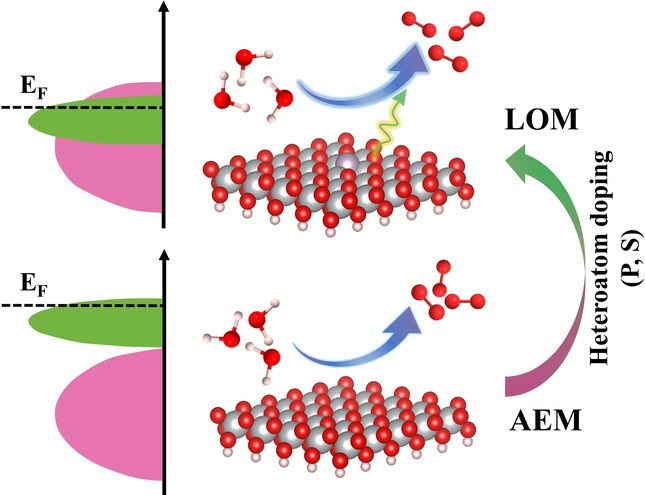
In this work, by using P and S-doped Ni−Fe mixed oxides as model catalysts for oxygen evolution reaction (OER), we discover that heteroatom doping triggers the OER mechanism transition from the adsorbate evolution mechanism (AEM) to the lattice-oxygen-mediated mechanism (LOM) by enlarging metal-oxygen covalency.
Photochemistry
Dearomatization of (Hetero)arenes through Photodriven Interplay between Polysulfide Anions and Formate
- First Published: 15 August 2023

A photocatalytic protocol was developed for the dearomatization of substituted naphthalenes, indoles, and related heteroaromatic compounds through a radical-polar crossover mechanism induced by single-electron transfer from photoexcited polysulfide anions in the presence of methanol. The catalytic turnover is maintained by hydrogen-atom transfer between polysulfide radical anions and formate.
Zinc Metal Batteries
An Ultrathin Inorganic Molecular Crystal Interfacial Layer for Stable Zn Anode
- First Published: 03 August 2023
Photodynamic Therapy
In Situ Self-Assembled J-Aggregate Nanofibers of Glycosylated Aza-BODIPY for Synergetic Cell Membrane Disruption and Type I Photodynamic Therapy
- First Published: 15 August 2023
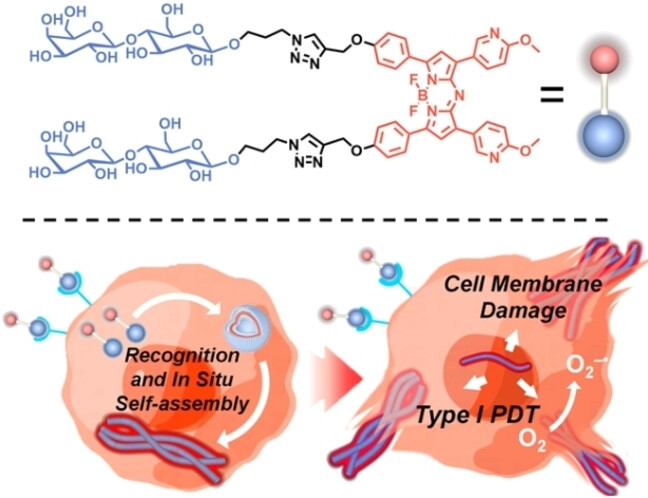
We designed a lactosylated Aza-BODIPY compound that self-assembles in situ to form J-aggregate nanofibers acting as type I photosensitizers. The J-aggregate nanofibers exhibited remarkable superoxide anion radical (O2−.) generation efficiency, the ability to damage the tumor cell membrane, and long-term retention at tumor sites. This efficient synergistic therapeutic effect was confirmed in HepG2 cells and tumor-bearing mice.
Solar Cells | Very Important Paper
Self-Assembled Monolayers of Bi-Functionalized Porphyrins: A Novel Class of Hole-Layer-Coordinating Perovskites and Indium Tin Oxide in Inverted Solar Cells
- First Published: 18 August 2023
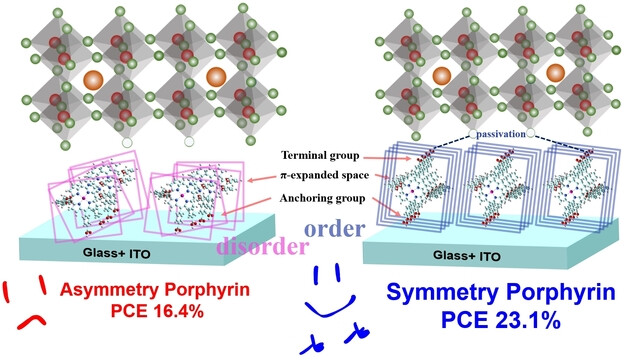
We have developed a series of new self-assembled monolayers (SAMs) based on ZnII porphyrin for use as hole-selective layer (HSL) in inverted perovskite solar cells (PSCs). Our study successfully demonstrates the superior performance of dual carboxylic acid functionalized porphyrins can boost the solar efficiency of PSCs. The outstanding performance of these porphyrin SAMs lies in their inherent self-assembled properties and the presence of dual carboxylic acid groups that facilitate effective anchoring to both the ITO surface and perovskites.
Oxygen Evolution Reaction
Dynamically Restructuring NixCryO Electrocatalyst for Stable Oxygen Evolution Reaction in Real Seawater
- First Published: 14 August 2023
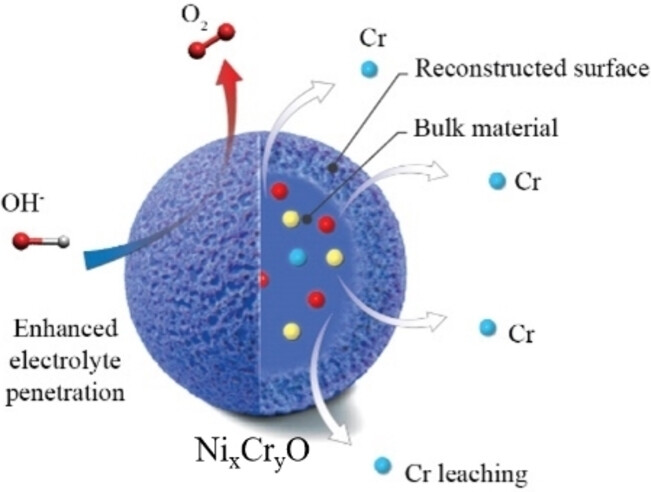
We developed a NixCryO electrocatalyst that can dynamically restructure itself during the alkaline oxygen evolution reaction (OER) and increase its porosity by Cr leaching. The enhancement of porosity improved electrolyte penetration and boosted electronic interaction between OH− and active sites, resulting in 2000, 275, and 100 h stability at 10, 100, and 500 mA cm−2, respectively, in real seawater.
Oxygen Evolution Reaction | Hot Paper
Ferricyanide Armed Anodes Enable Stable Water Oxidation in Saturated Saline Water at 2 A/cm2
- First Published: 21 August 2023
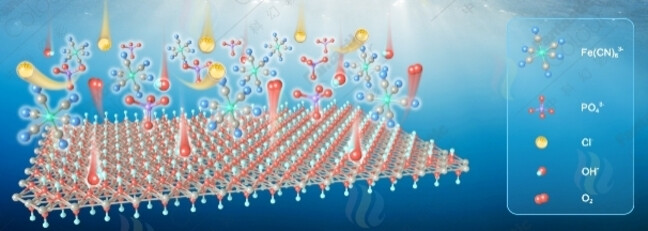
Continuous saline water electrolysis increases the concentration of Cl−, leading to severe anode corrosion. In this work, we have developed the anodes that could efficiently catalyze water oxidation in alkaline saturated saline water at ultra-high current densities up to 2 A cm−2 over hundreds of hours. To the best of our knowledge, this is one of the most stable brine oxidation electrodes reported to date.
MOF Membranes
Charging Metal-Organic Framework Membranes by Incorporating Crown Ethers to Capture Cations for Ion Sieving
- First Published: 15 August 2023
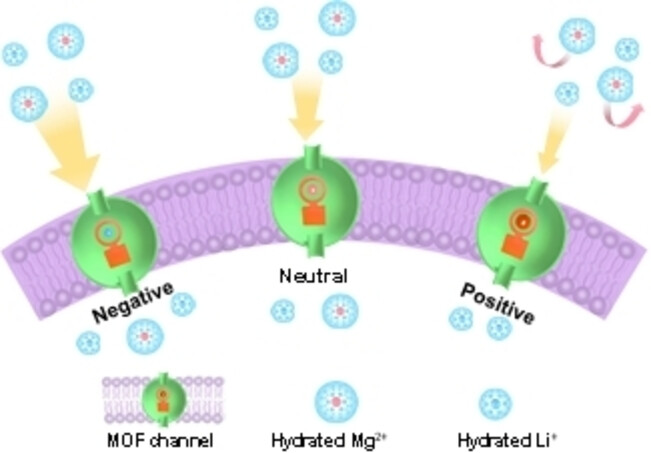
A charging metal–organic framework (MOF) membrane realizes charge inversion from negative to positive by including crown ethers to capture cations. The result is enhanced Li+/Mg2+ selectivity. The improved Li+/Mg2+ selectivity is associated with the expanding of energy-barrier deviation between Li+ and Mg2+ caused by the steric effect and the electrostatic repulsion.
Conjugated Polymers | Hot Paper
Room Temperature Anhydrous Suzuki–Miyaura Polymerization Enabled by C−S Bond Activation
- First Published: 14 August 2023

An anhydrous room temperature CAS-Suzuki–Miyaura cross-coupling reaction between (hetero)aryl boronic esters and aryl sulfides was explored, of which universality was exemplified with thirty small molecules and twelve alternating conjugated polymers. Mechanism studies revealed the importance of room temperature and anhydrous condition in reducing the homocoupling defects and enhancing the optoelectronic properties of the conjugated polymers.
OLEDs
Introducing Spiro-locks into the Nitrogen/Carbonyl System towards Efficient Narrowband Deep-blue Multi-resonance TADF Emitters
- First Published: 18 August 2023

The various spiro-locks were introduced into the nitrogen/carbonyl-based multi-resonance thermally activated delayed fluorescence (MR-TADF) system via a designed synthetic route. The introduction of spiro-locks increased molecular rigidity and suppressed intermolecular interactions. Thus, narrowband deep-blue electroluminescence spectra and improved device efficiencies were achieved simultaneously.
Fluoroalkenes
Tunable Synthesis of Monofluoroalkenes and Gem-Difluoroalkenes via Solvent-Controlled Rhodium-Catalyzed Arylation of 1-Bromo-2,2-difluoroethylene
- First Published: 17 August 2023
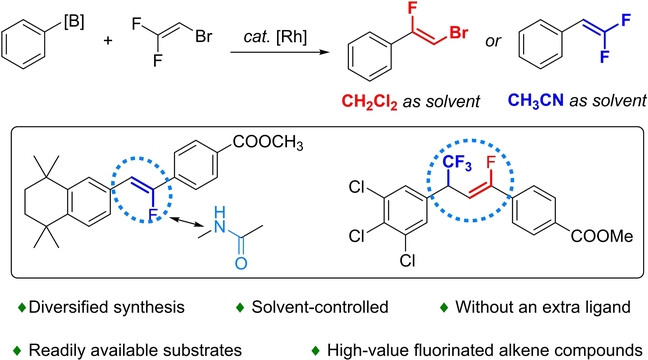
We report a solvent-controlled rhodium-catalyzed tunable arylation of 1-bromo-2,2-difluoroethylene, which allows the synthesis of monofluoroalkenes and gem-difluoroalkenes from readily available feedstocks. This study provides a useful strategy for the divergent synthesis of fluorine-containing scaffolds and sheds light on the importance of solvent selection in catalytic reactions.
Electrochemistry
Continuous Flow Electrochemistry Enables Practical and Site-Selective C−H Oxidation
- First Published: 17 August 2023
Electrosynthesis
Electroreductive Radical Borylation of Unactivated (Hetero)Aryl Chlorides Without Light by Using Cumulene-Based Redox Mediators
- First Published: 09 August 2023
Asymmetric Synthesis | Hot Paper
Asymmetric Allylic Substitution-Isomerization for the Modular Synthesis of Axially Chiral N-Vinylquinazolinones
- First Published: 15 August 2023
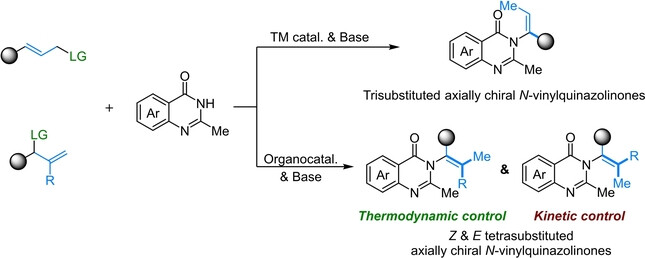
Herein, we report asymmetric allylic substitution-isomerization for the regio- and atroposelective synthesis of axially chiral N-vinylquinazolinones. The catalysis system was achieved by means of asymmetric transition-metal catalysis and organocatalysis which afforded trisubstituted as well as E- and Z-tetrasubstituted N-vinylquinazolinone atropisomers, respectively.
Fluorescent Probes
A Fluorescent Probe for Investigating the Role of Biothiols in Signaling Pathways Associated with Cerebral Ischemia-Reperfusion Injury
- First Published: 16 August 2023
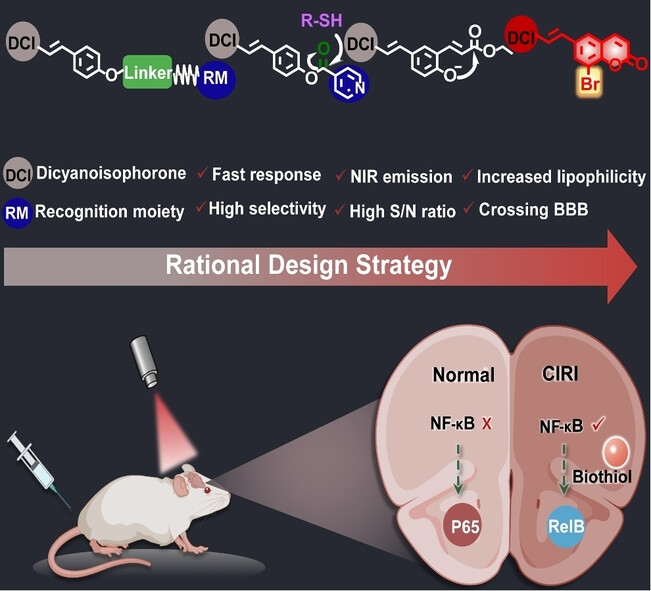
A novel near-infrared (NIR) fluorescent probe for crossing the blood–brain barrier was constructed via a rational molecular design strategy. The probe allowed the investigation of the biothiol-mediated nuclear factor kappa-light-chain-enhancer of activated B cells (NF-κB) signaling pathway in cerebral ischemia-reperfusion injury mice models.
Photocatalytic H2O2 Generation
Promoting Solar-driven Hydrogen Peroxide Production over Thiazole-based Conjugated Polymers via Generating and Converting Singlet Oxygen
- First Published: 15 August 2023
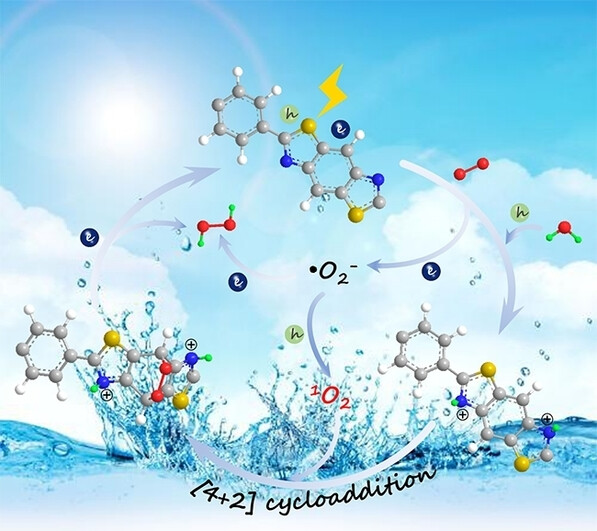
It is found that singlet oxygen (1O2) can react with benzobisthiazole-based photocatalysts via [4+2] cycloaddition, leading to the formation of endoperoxide intermediate species, which promotes the separation of charge carriers and reduces the barrier for hydrogen peroxide (H2O2) production. The H2O2 production rate of the catalyst is as high as 7274 μmol g−1 h−1 in pure water in air.
Zinc Batteries | Hot Paper
Triple-function Hydrated Eutectic Electrolyte for Enhanced Aqueous Zinc Batteries
- First Published: 15 August 2023

A triple-function eutectic electrolyte is designed by introducing tetramethylene sulfone (TMS) as hydrogen bond acceptor. The preferentially adsorbed TMS on the Zn surface provides a shielding buffer layer to retard the sedimentation and suppress dendrite growth. TMS modulates the primary solvation shell of Zn2+ to realize a novel solvent co-intercalation situation, and the intercalated TMS remains in the cathode as a “pillar” to stabilize the structure.
Supramolecular Chemistry
Isoreticular Preparation of Tetraphenylethylene-based Multicomponent Metallacages towards Light-Driven Hydrogen Production
- First Published: 18 August 2023
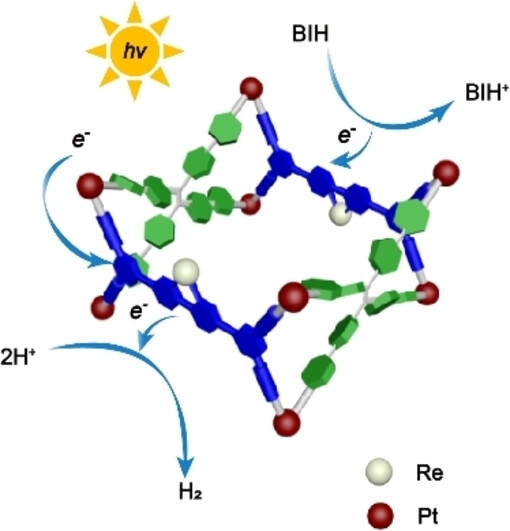
A series of isoreticular tetraphenylethylene(TPE)-based multicomponent metallacages were prepared using TPE derivatives as the faces and different tetracarboxylic ligands as the pillars. The integration of TPE-based photosensitizers and open Re catalytic sites into a single metallacage promoted the directional electron transfer within the metallacage, offering good photocatalytic hydrogen production performance.
Supramolecular Chemistry | Very Important Paper
Polymeric Carbon Nitride with Chirality Inherited from Supramolecular Assemblies
- First Published: 15 August 2023

The large-scale synthesis of chiral polymeric carbon nitride (CN) powder and electrode capable of enantioselective recognition from chiral supramolecular assemblies as monomers is reported. The optimized chiral CN exhibits good chiral recognition for tartaric acid, with an enantioselective preference of ca. 14 % for the D enantiomer.
Janus-Type ESIPT Chromophores with Distinctive Intramolecular Hydrogen-bonding Selectivity
- First Published: 21 August 2023
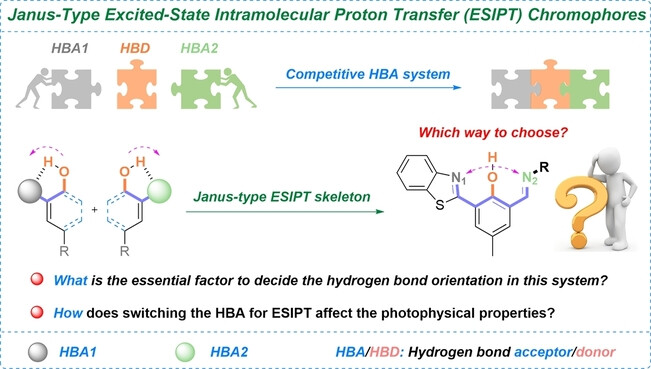
A new family of Janus-type ESIPT chromophores with distinctive hydrogen bonding selectivity between competitive hydrogen bond acceptors (HBAs) were reported. Single-crystal structures and theoretical studies unveiled the molecular origins of the biased intramolecular hydrogen bonds (H-bonds) and their impact on the ESIPT process. This Janus-type ESIPT chromophore skeleton provides new opportunities for the design of solid luminescent materials.
Heterogene Katalyse
Bestimmung der Produktivität der direkten Umwandlung von Methan in Methanol mittels Kupfer ausgetauschtem Zeolith Omega (MAZ) mittels dem Sauerstoff Looping Verfahren
- First Published: 14 June 2023

Cu-Omega (MAZ) ist ein sehr aktives und selektives Material für die Methan-to-Methanol (MtM) Umwandlung mittels dem Saurestoff-Looping Verfahren. Durch Determination der Produktivität mittels einer neuen Screening Methode welche Operando XAS und Massenspektrometrie vereint, zeigt diese Arbeit das Potential welches dieses Material für eine potenzielle industrielle Anwendung besitzt, sowie einen neue Screening Methode für Materialien welche auch im Sauerstoff-Looping Verfahren benutzt werden.
Koordinationskäfige
Pd(II)-vermittelte Assemblierung einer Reihe von löslichen Diketopyrrolopyrrol-Chromophor-Stapeln
- First Published: 17 July 2023
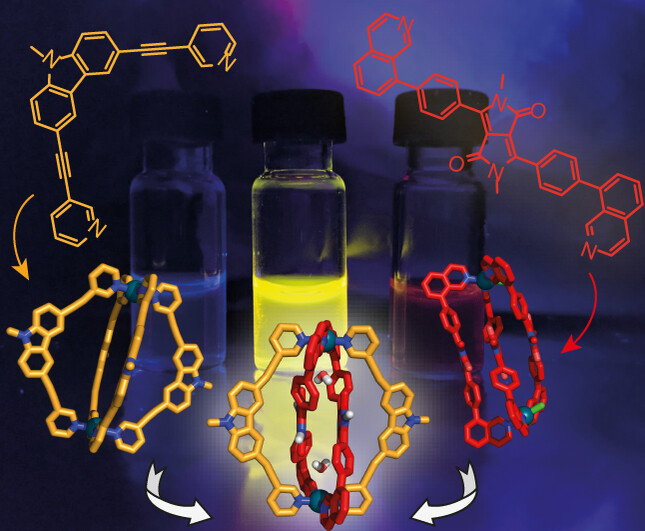
Die Stapelung von einem, zwei, drei oder vier Diketopyrrolopyrrol-Farbstoffen (DPP) wurde durch die jüngsten Fortschritte in der Pd(II)-vermittelten Selbstassemblierung erreicht. Wir berichten über zwei bisher nicht bekannte, selbstpenetrierende Motive: einen Pd2L3-Dreifach- und einen Pd2L4-Vierfachstapel. Mit zunehmender Stapelgröße verschiebt sich die Absorption bathochrom und die Emission nimmt ab, mit Ausnahme von Verbindung Pd2L2L′2, die sich durch eine außergewöhnliche Lumineszenz-Quantenausbeute von 51 % auszeichnet.
Hauptgruppenchemie
Diboriranid σ-Komplexe von d- und p-Blockmetallen
- First Published: 31 July 2023
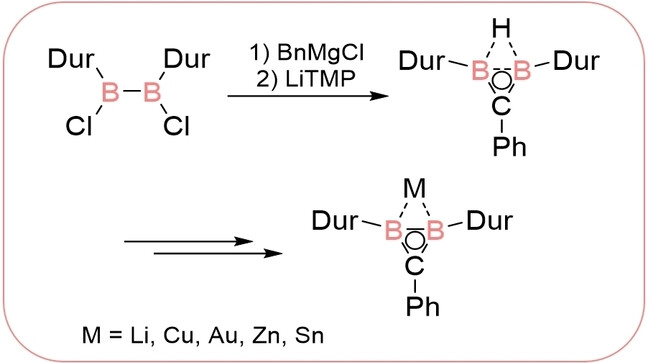
Wir berichten über die einfache Synthese des ersten Lithium Peraryldiboriranids c-(DurB)2CPh− über das entsprechende nicht-klassische Diboriran (Dur=2,3,5,6-Tetramethylphenyl; Bn=Benzyl) ausgehend von einem Diboran(4). Wir zeigen die ausgeprägte Tendenz des Diboriranids zur σ-Koordination zu Hauptgruppen- und Übergangsmetallen (Au, Cu, Zn und Sn) unter Erhalt des 2e− π-Systems des B2C-Rings.
Reaktivität | Hot Paper
Mesoionische N-Heterocyclische Olefine verschieben die obere Grenze der Nucleophilie-Skala
- First Published: 04 August 2023

Mesoionische N-heterocyclische Olefine (mNHOs) wurde synthetisiert und ihre Reaktionen mit Michael-Akzeptoren und CO2 untersucht. Die außerordentlich hohe Nucleophilie der mNHOs wurde durch kinetische Messungen bestimmt. Die Integration der mNHOs in die Mayrsche Nucleophilie-Skala zeigt, dass sie zu den stärksten bisher eingruppierten Kohlenstoff-Nucleophilen gehören.
Photochemie | Hot Paper
Die Stärke von Action Plots: Untersuchung der Reaktionsselektivität lichtstabilisierter dynamischer kovalenter Chemie
- First Published: 08 August 2023
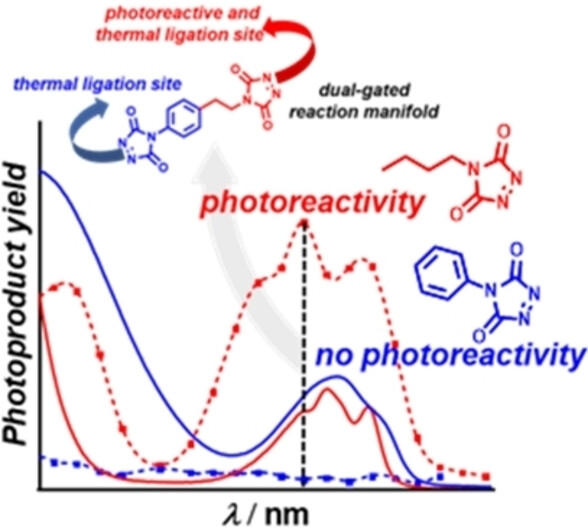
Die Stärke von sog. „Action Plots“ wird durch die Vorstellung eines reaktionsselektiven Fensters zwischen zwei verschieden substituierten Triazolindionen demonstriert, welche nahezu identische Absorptionsspektren aufweisen. Der bemerkenswerte Unterschied in der Photoreaktivität wird mittels eines zweifach gesteuerten Reaktionspfades genutzt, welcher das regioselektive (photo)chemische Verhalten beider Triazolindion-Substrate innerhalb eines einzigen Moleküls demonstriert.
Zuschriften
Kreuzmetathese | Hot Paper
Performance-Deskriptoren für Katalysatoren auf Basis von Molybdän-, Wolfram- oder Rheniumoxiden für die Metathese von Ethen mit 2-Buten zu Propen
- First Published: 10 July 2023
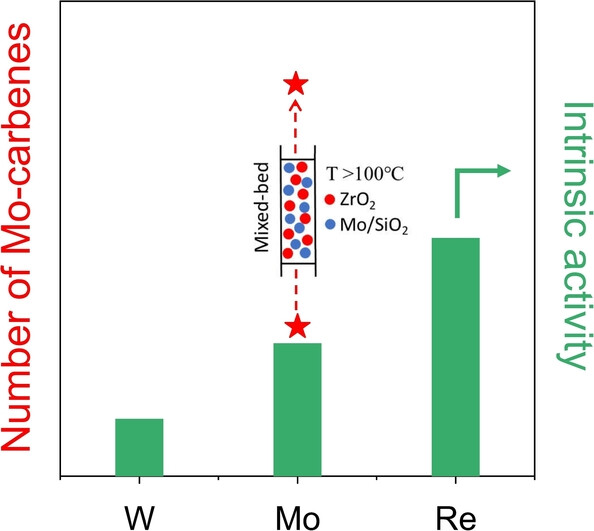
Steady-state isotopic transient kinetic analysis lieferte die Grundlangen der In situ-Umwandlung von M(W, Mo oder Re)Ox in M-Carbene bei der C2H4−2-C4H8-Metathese zu C3H6. Ihre Konzentration und intrinsische Aktivität folgen der Reihenfolge Re>Mo≫W. Die Konzentration, nicht aber die intrinsische Aktivität, kann durch die Verwendung eines metatheseinaktiven ZrO2-Cokatalysators erhöht werden. Sein steigernder Effekt hängt von seiner Fähigkeit ab, CH-Bindungen in 2-Butenen zu aktivieren.
Naturstoffe
Korrektur der absoluten Konfiguration von Chelocardin und Amidochelocardin
- First Published: 19 July 2023

Chelocardin und das aus dessen manipulierter Biosynthese stammende Derivat Amidochelocardin besitzen eine breite antibakterielle Aktivität. In diesem Artikel beschreiben wird die Korrektur der absoluten Konfiguration von Amidochelocardin und Chelocardin auf Basis einer Kombination aus XRD, NMR, ECD und TDDFT-ECD Berechnungen. Die mit XRD Analyse bestimmte absolute Konfiguration des strukturell eng verwandten semisynthetischen Analogs von 6-desmethyl-chelocardin (1) unterstützt ebenfalls unser Ergebnis.
NMR-Spektroskopie
Fragment-Screening und schnelle mikromolare Detektion mit einem Benchtop-NMR-Spektrometer ermöglicht durch photoinduzierte Hyperpolarisation
- First Published: 31 July 2023

Benchtop-NMR-Spektrometer sind kompakt, kostengünstiger und arbeiten kryogenfrei. Die vorgestellte Methode mit photoinduzierter Hyperpolarisation ermöglicht den Nachweis einer Protein-Fragment-Wechselwirkung durch eine Verringerung des Ligandensignals, einfach durch den Vergleich der in Abwesenheit und Anwesenheit von Protein gemessenen Spektren. Unser Ansatz ermöglicht ein Screening bei mikromolaren Ligandenkonzentrationen und niedrigen mikromolaren Proteinkonzentrationen auf einem Benchtop-NMR.
MOF Scintillators | Hot Paper
High Performance Dynamic X-ray Flexible Imaging Realized Using a Copper Iodide Cluster-Based MOF Microcrystal Scintillator
- First Published: 27 June 2023
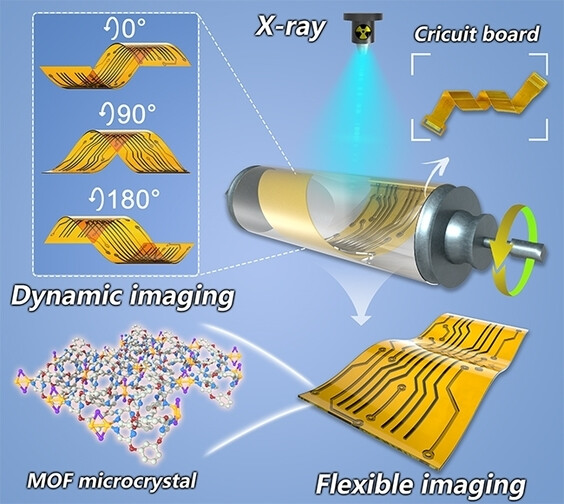
High performance dynamic X-ray flexible imaging in extremely humid environments was achieved using copper iodide cluster-based MOF microcrystal scintillator, which shows a high X-ray absorption efficiency, environmental friendliness, good stability and excellent processability.Twitter: High Performance Dynamic X-ray Flexible Imaging Realized Using a Copper Iodide
Asymmetric Catalysis
Copper(I)-Catalyzed Asymmetric Hydrophosphination of 3,3-Disubstituted Cyclopropenes
- First Published: 17 August 2023
2D MOFs | Hot Paper
Two-Dimensional Conjugated Metal-Organic Frameworks with Large Pore Apertures and High Surface Areas for NO2 Selective Chemiresistive Sensing
- First Published: 06 June 2023

Two new two-dimensional conjugated metal–organic frameworks (2D c-MOFs) were synthesized via coordination of a new ligand (HAOTP) with metal ions (Ni2+ and Cu2+). The resulting HIOTP-Ni MOF has a large pore aperture of 3.3 nm and a high surface area of 1300 m2 g−1. As a result, it has exceptional performance as a chemiresistive sensor, with a highly selective (405 %) and rapid response (1.69 min) towards 10 ppm NO2 gas.
Metal Recycling
Efficient Recycling of Gold and Copper from Electronic Waste by Selective Precipitation
- First Published: 18 August 2023

Efficient and selective recovery of gold and copper is achieved using triphenylphosphine oxide and 2,3-pyrazinedicarboxylic acid, respectively from 2 M HCl e-waste leach solutions. The selectivity of these precipitation methods, together with their ease of operation and capacity to recycle and reuse the precipitants, offers potential applications in the purification of Au and Cu from various metal sources.
Genetic Code Expansion
Constructing Photoactivatable Protein with Genetically Encoded Photocaged Glutamic Acid
- First Published: 16 August 2023
Photocatalysis
Photothermal Conversion by Carbon Black Facilitates Aryl Migration by Photon-Promoted Temperature Gradients
- First Published: 14 August 2023
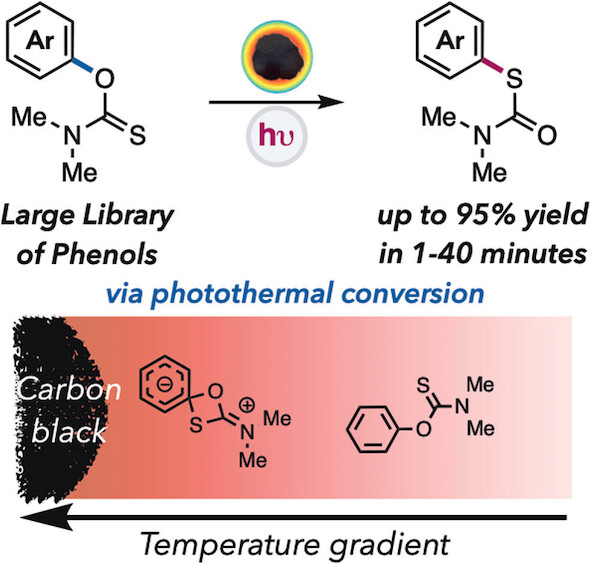
Photothermal conversion enables thermal gradients that facilitate high activation barrier reactions, such as the Newman Kwart Rearrangement. Substrates normally requiring bulk temperatures >250 °C are easily converted via visible light irradiation with short reaction times. Wavelength and intensity tunability enable selective product formation.
Thermometry
Toward Magneto-Optical Cryogenic Thermometers with High Sensitivity: A Magnetic Circular Dichroism Based Thermometric Approach
- First Published: 18 August 2023
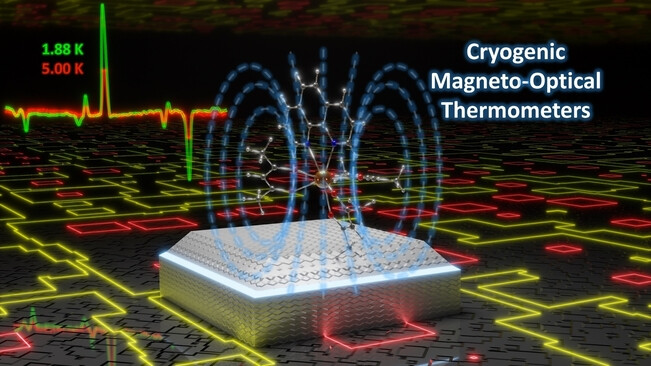
In this study, the application potential of magnetic circular dichroism (MCD) techniques is showcased through the inaugural application of MCD-based magneto-optical thermometry. Leveraging the intrinsic temperature dependence of the MCD C-term, the presence of dual-signaled bands, and the amalgamation of multiparametric thermal read-out with multiple regression, remarkable sensitivities of up to 95.3 % K−1 are achieved with the [Ho(acac)3(phen)] complex. This achievement establishes a new benchmark for thermal sensitivity values within the cryogenic range.
Carbenes
Carbene Formation or Reduction of the Diazo Functional Group? An Unexpected Solvent-Dependent Reactivity of Cyclic Diazo Imides
- First Published: 28 July 2023

Solvent-dependent light-assisted divergent reactivities of cyclic diazo imides and thiols have been disclosed. In dichloromethane, an indane-fused pyrrolidine is formed via triplet a carbene intermediate. By switching the solvent to acetonitrile, the aryl thiol acts as a reductant and leads to the reduction of the diazo functional group to a hydrazone.
Atropisomerism
Synthesis of Axially Chiral QUINAP Derivatives by Ketone-Catalyzed Enantioselective Oxidation
- First Published: 16 August 2023

A ketone-catalyzed reaction for the enantioselective oxidation of N atoms was developed and effectively applied to the atroposelective kinetic resolution of QUINAPOs and related compounds. Both highly enantioenriched QUINAPO N-oxide products could be readily converted into QUINAPs without loss of chiral integrity. QUINAPO N-oxide was also shown to act as a chiral Lewis base catalyst in a series of enantioselective transformations.
Lasers | Hot Paper
Continuous-Wave Raman Lasing from Metal-Linked Organic Dimer Microcrystals
- First Published: 16 August 2023
Radical Stability | Very Important Paper
MIDA- and TIDA-Boronates Stabilize α-Radicals Through B−N Hyperconjugation
- First Published: 04 August 2023

This work shows that alkyl MIDA- and TIDA-boronates have a notable stabilizing effect on α-radicals that arises via B−N hyperconjugation. This is supported by DFT radical stabilization energy and spin density studies, development of a site-selective bromination reaction, and LED NMR kinetic analysis of bromination rates for different alkyl boronic esters.
Cross-Coupling Reactions
Direct Acylation of Unactivated Alkyl Halides with Aldehydes through N-Heterocyclic Carbene Organocatalysis
- First Published: 15 August 2023

Aldehydes underwent cross-coupling with unactivated alkyl halides in the presence of an NHC organocatalyst, thus enabling the rapid synthesis of various ketones from readily available starting materials under mild conditions. This method was also applied to the late-stage functionalization of pharmaceutical derivatives. Mechanistic investigations suggest a closed-shell nucleophilic substitution mechanism for this organocatalytic reaction.
Carbonylation
Regioselective and Enantioselective Copper-Catalyzed Hydroaminocarbonylation of Unactivated Alkenes and Alkynes
- First Published: 16 August 2023

We report here a general method for the regio- and enantioselective Cu-catalyzed anti-Markovnikov hydroaminocarbonylation of unactivated alkenes under mild conditions. The reaction tolerates a wild range of functional groups and applicable to different classes of alkenes. Alkynes are also compatible under this catalytic system with the cascade hydrogenation-hydroaminocarbonylation process to alkyl amides.
Atropoisomers
Synthesis of Axially Chiral Biaryls through Cobalt(II)-Catalyzed Atroposelective C−H Arylation
- First Published: 16 August 2023
Fluorine Chemistry
α-Difluoroalkylation of Benzyl Amines with Trifluoromethylarenes
- First Published: 18 August 2023

A highly modular technique that streamlines the synthesis of α-difluoroalkylated amines from benzyl amines and trifluoromethylarenes has been developed. This protocol demonstrates remarkable operational simplicity, excellent chemoselectivity, and wide applicability, including with advanced synthetic intermediates, thus providing a novel pathway to access medicinally-relevant α-difluoroalkylated amines from readily available and simple precursors.
Supramolecular Catalysis | Hot Paper
Anion-(π)n-π Catalytic Micelles
- First Published: 13 August 2023

Anion-(π)n-π catalytic micelles are introduced to expand the collection of systems catalysts compatible with anion-π catalysis with a rich topic of general importance. They are of interest to realize anion-π catalysis, anion-(π)n-π catalysis and anion-(π)n-π autocatalysis in water. Classics in supramolecular chemistry are installed to control substrate binding and positioning within the confined micellar space for access to emergent properties.
Total Synthesis | Hot Paper
Total Synthesis of Metaphanine and Oxoepistephamiersine
- First Published: 21 August 2023

Two complex hasubanan alkaloids were synthesized from inexpensive cyclohexanedione monoethylene acetal by a divergent route featuring a palladium-catalyzed cascade cyclization. Regioselective Baeyer–Villiger oxidation followed by MeNH2-triggered skeletal reorganization formed the benzannulated aza[4.4.3]propellane, and late-stage regio- and diastereoselective oxidative annulation of a sp3 C−H bond formed the challenging tetrahydrofuran ring system.
Zeolite Single-Site Catalysts
Zeolite Synthesis in the Presence of Metallosiloxanes for the Quantitative Encapsulation of Metal Species for the Selective Catalytic Reduction (SCR) of NOx
- First Published: 15 August 2023

A one-pot hydrothermal zeolite synthesis using metallosiloxane precursors enables a quantitative encapsulation of metal species into the zeolite. For Fe-MFI zeolite the approach facilities a homogeneous distribution of the Fe species throughout the zeolite framework and leading to improved catalytic activity with good tolerance to H2O/SO2 in the NH3-selective catalytic reduction (SCR) of NOx across a wide temperature range.
Gold Clusters
Isolable Tetragold(0) Clusters with Polarity-Tunable exo-Au−Au Bond via Intramolecular σ-Aromatization
- First Published: 18 August 2023
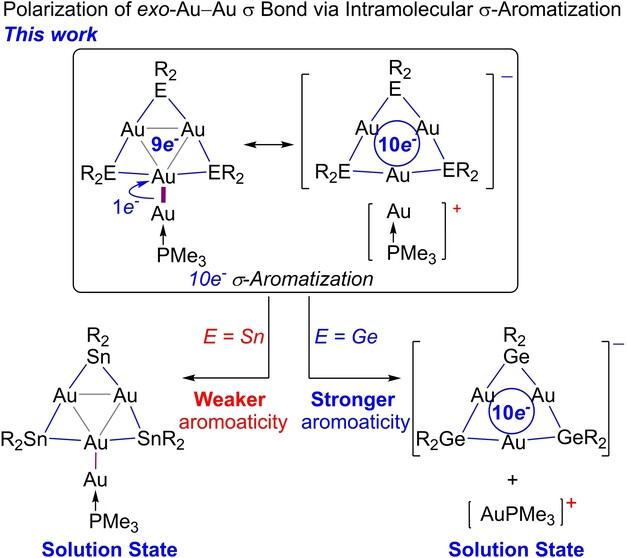
Ligand-enveloped tetragold(0) clusters have been successfully synthesized via a nucleophilic substitution reaction between a Au3 anionic cluster and PMe3AuCl. A novel stabilization mode, intramolecular σ-aromatization has been discovered, in which the intramolecular σ-aromatization has now been observed for the first time in homometallic clusters, and the polarity of the exo-Au−Au bonds can be tuned via the strength of σ-aromaticity.
Indole Alkaloids
Enzymatic Benzofuranoindoline Formation in the Biosynthesis of the Strained Bridgehead Bicyclic Dipeptide (+)-Azonazine A
- First Published: 17 August 2023
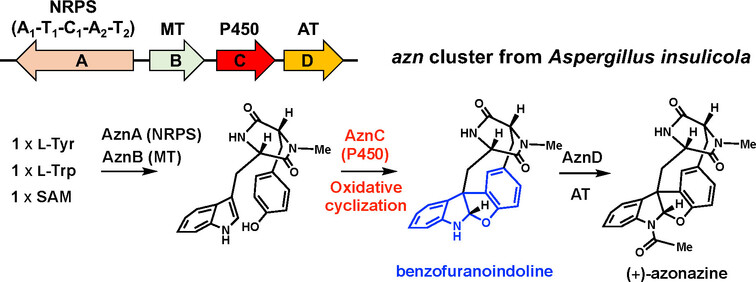
The biosynthetic pathway of the strained dipeptide (+)-azonazine A from marine-derived Aspergillus insulicola, which features a rarely observed benzofuranoindoline ring system, was uncovered. Heterologous reconstitution of the fourth-enzyme pathway showed a P450 enyzme catalyzes an oxidative cyclization of cyclo-(l-Trp-N-methyl-l-Tyr) to form the hexacyclic ring system. Analogs of azonazine A were generated by supplementing the producing strain with different indole-substituted tryptophan analogs.
Energy Conversion
Few-Layer Fullerene Network for Photocatalytic Pure Water Splitting into H2 and H2O2
- First Published: 17 August 2023






